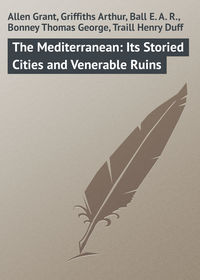Kitabı oku: «The Mediterranean: Its Storied Cities and Venerable Ruins», sayfa 16
Bir şeyler ters gitti, lütfen daha sonra tekrar deneyin
Türler ve etiketler
Yaş sınırı:
12+Litres'teki yayın tarihi:
16 mayıs 2017Hacim:
380 s. 1 illüstrasyonTelif hakkı:
Public Domain
